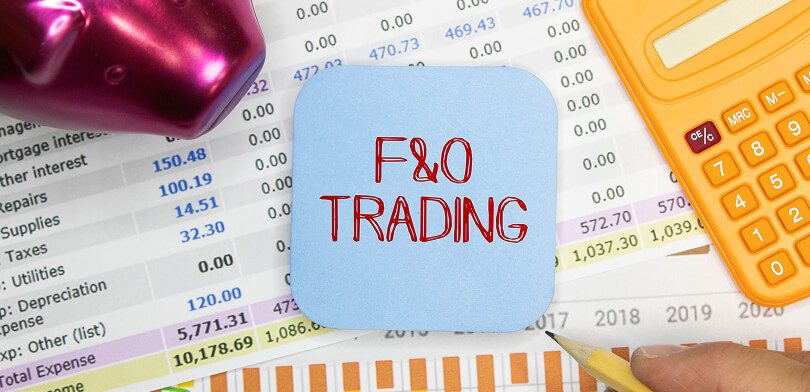The stock market is a highly dynamic entity that offers investors many options to build their portfolios. One of the most popular and intriguing ways to invest in the stock market is trading futures and options.
These financial instruments allow investors to speculate on the future price movements of a particular stock or index, providing them with the potential to earn significant profits.
Let us understand how to trade in futures and options providing readers with a comprehensive understanding of these powerful tools.
Topics Covered:
- What are Futures and Options?
- Futures and Options Differences
- Trade in Futures and Options?
- Things to Keep in Mind
- Conclusion
What are Futures and Options?
Futures and options are financial instruments that allow individuals to participate in the market without directly owning the underlying asset. Futures contracts are agreements to buy or sell an asset at a predetermined future date and price.
Essentially, they enable traders to speculate on the future price movements of commodities , currencies, or stocks. For instance, an investor can enter into a futures contract to purchase a certain quantity of crude oil at a specific price, with the transaction occurring later.
On the other hand, options provide the right, but not the obligation, to buy or sell an asset at a predetermined price before a specific expiration date. This gives traders the flexibility to profit from both rising and falling markets. Individuals can buy the asset at the strike price by purchasing a call option, while a put option allows them to sell the asset.
Understanding how to trade in futures and options can open up opportunities for investors to diversify their portfolios and potentially generate returns based on their market predictions.
Begin your investing journey today. Your Demat account is the first step.
Futures and Options Differences
Understanding the key differences between the two is crucial, especially when considering trade in futures and options. The first major difference lies in the level of risk exposure and the obligation to buy or sell
In futures trading , the buyer and seller must fulfil the contract at the predetermined date and price. This means there is a higher level of risk as traders must be prepared to buy or sell the underlying asset, regardless of its market value at the time of contract expiration.
Conversely, options trading gives traders the right, but not the obligation, to buy or sell the asset. This gives them the flexibility to decide whether to exercise the option based on the market conditions.
Another important aspect is the upfront costs involved in trading Futures and Options. In options trading, traders must pay a premium, the option’s cost. This premium is typically lower than the margin required for futures trading. Margin refers to the initial deposit traders must maintain in their trading account to cover potential losses. Futures trading involves higher upfront costs due to margin requirements.
Additionally Read: About Demat Account
When it comes to potential gains and losses, futures trading offers the possibility of unlimited gains or losses. This is because the trader is directly exposed to the movement of the underlying asset. On the other hand, options trading offers limited risk as traders can only lose the premium paid for the option. However, the potential gains in options trading can be substantial if the market moves favourably.
The suitability of making trades in futures and options depends on the preferences and risk appetite of individual traders in the Indian market. Future trading may be suitable for those seeking higher risk and potentially higher returns.
Trade in Futures and Options?
Follow the below steps:
Step 1: Account Setup
To begin trading in F&O in India, the first step is to set up a trading account with a registered broker. Choose a reputable brokerage firm that offers a user-friendly platform with access to a wide range of contracts.
Step 2: Understand Market Trends
Before diving into trading, spend time studying and understanding market trends. Analyse historical data, keep track of market news and follow expert opinions to identify potential opportunities for profitable trades.
Step 3: Choose the Right Broker
Selecting the right broker is crucial for successful trading. Look for a broker that offers competitive brokerage rates, reliable customer support, and a robust trading platform with real-time data and advanced charting tools.
Step 4: Analyse Market Indicators
Utilise various market indicators such as moving averages, relative strength index (RSI), and volume analysis to identify entry and exit points. Technical analysis can help predict future price movements and make informed trading decisions.
Step 5: Decide Between Buying and Selling Futures or Options
Once you have identified a trading opportunity, decide whether to buy or sell futures or options contracts. Buying a futures contract allows you to profit from an expected increase in the price of the underlying asset. Selling a futures contract allows you to profit from an expected decrease in the price of the underlying asset. Similarly, options provide the flexibility to buy a call option or sell a put option based on your market analysis.
Step 6: Implement Risk Management Strategies
Implementing effective risk management strategies is essential to protect your capital. Set realistic profit targets and stop-loss orders to limit potential losses. Diversify your portfolio by trading different assets and avoid putting all your capital into a single trade.
Step 7: Stay Updated and Monitor Trades
Stay updated with market trends and monitor your trades regularly. Continuously evaluate the performance of your trades and make adjustments as necessary. Keep a trading journal to track your progress and learn from both successful and unsuccessful trades.
As with any form of trading, remember that trading in futures and options carries inherent risks. It is recommended to educate yourself thoroughly, seek guidance from experienced traders, and start with small investments until you gain confidence and experience in the market.
Recommended Read: Zero Brokerage Trading Account
Things to Keep in Mind
Trading in futures and options requires a comprehensive understanding of the market and its dynamics. Traders must prioritise continuous market education to stay updated with the latest trends, strategies, and regulatory changes. Also, comprehend the impact of market volatility on trades and develop a disciplined trading strategy. By staying informed and adapting to market conditions, traders can make informed decisions and mitigate risks effectively.
Recommended Read: Guide to the F&O Stock List in Trading
Conclusion
Trading in futures and options presents a valuable opportunity for investors to enhance their portfolio diversification and manage risks effectively. By incorporating these derivatives into their investment strategy, traders can gain exposure to a wider range of assets and hedge against potential market downturns.
Recommended Read: Online Trading Meaning
However, approach F&O trading with responsibility and caution. Continuous learning and staying updated with market trends and regulations are necessary for success in the Indian stock market’s F&O segment.
Investors can simplify their F&O trading journey by opening an online demat account. With an online demat account, traders gain access to futures and options trading platforms, allowing them to execute trades efficiently and manage their derivative positions with ease. This streamlines the trading process and enhances overall portfolio management capabilities.






